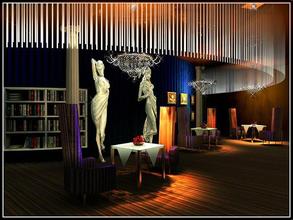Introduction to the characteristics of the manor producing area of delicious and balanced Guatemalan boutique coffee beans
In 1982, the National Left Guerrilla merged to form the "National Revolutionary Union of Guatemala" and armed struggle spread throughout the country. Peasants dissatisfied with the overthrow of the Árbenz regime organized a guerrilla army, in which more than 100,000 people died and millions were displaced. In September 1982, Guatemala's army persecuted the local Mayan people, bordering on genocide, killing more than 9000 Mayans. Beginning in 1983, persecution on the part of the Government of Guatemala began to decrease and the country resumed democratization. However, the inequality between the rich and the poor in the country has not been solved, and only a minority of 1 per cent owns more than 60 per cent of arable land and wealth. In 1985, Guatemala reorganized elections. Guatemala has several lakes, the largest of which is Lake Izabal in the department of Izabal and the deepest is Lake Atitlan in the department of Solora. The main rivers flowing through Guatemala are the Motagua River, the Wusu Macinda River, the Chixo River and the Shaston River. The Chicaso River is the source of the Usuma River. The flag of Guatemala was launched in 1971. The flag is rectangular and has an aspect ratio of 8:5. The flag consists of three parallel vertical rectangles, white in the middle and blue on both sides; the center of the white rectangle is painted with the national emblem pattern. The colors of the flag are derived from those of the original Central American federal flag. Blue symbolizes the Pacific Ocean and the Caribbean Sea respectively, white symbolizes the pursuit of peace. The national bird of Guatemala is the Quetzal Bird (Phoenix-tailed Virile). The people of Guatemala regard the Quetzal Bird as a symbol of love, freedom, patriotism and friendship. It has the laudatory name of "Bird of Freedom." Quetzal Bird likes to live in pairs and is inseparable, so it is also a symbol of love. It was officially declared the national bird by the Guatemala government. It is used as a symbol on national flags, emblems and coins, and legal provisions prohibit the capture of quetzales.
Guatemala is bordered by Mexico to the north, Honduras and El Salvador to the south, the Caribbean Sea to the east and the Pacific Ocean to the west. It is blessed with tropical rain forests, volcanic geology, plateau valleys and a variable microclimate. Guatemala coffee has enjoyed the reputation of the best quality coffee in the world. The extra hard coffee beans here are full, delicious and balanced, and the coffee brewed with them is pure and rich. Antigua is a famous coffee producer. Antigua coffee is produced at Hacienda Carmona, where the best quality coffee is EL Pulcal, which is not only of good quality, but also richer in flavor, taste and tobacco flavor than other coffees in Guatemala. Every 30 years or so, the area around Antigua is hit by a volcanic eruption, which provides more nitrogen to the already fertile land, and plenty of rain and sunshine make the area more suitable for growing coffee-such a rich regional flavor should be related to the soil and water of the eight dangerous countries. Among them, Antigua, Aikatango Valley, Etilan, San Marco and Huaiqiangsi five producing areas belong to volcanic geology. In addition, Vivienne Nango, Cobain and New Oriental three production areas, belong to non-volcanic highlands or tropical rain forest climate. Guatemala has more than 300 kinds of micro-climate, which can be called the most dangerous country in the world. The average altitude is high. The coffee belt is distributed above 1500 meters, between 14 and 16 degrees north latitude. It is easy to grow extremely hard beans. All of them are washed. 45% of them belong to fine grade, with a high proportion and a small amount of Robusta.
The main coffee varieties are bourbon, tibika, kaduai and kadura, and there are also a few yellow bourbon, guixia and pakamala. The varieties are quite diverse, but it is also valuable to keep the ancient tibika and bourbon.

Important Notice :
前街咖啡 FrontStreet Coffee has moved to new addredd:
FrontStreet Coffee Address: 315,Donghua East Road,GuangZhou
Tel:020 38364473
- Prev

Introduction to the unique and strong flavor of Costa Rican boutique coffee bean flavor manor
From 1870 to 1882, T. Guardia Gutierrez exercised dictatorship, weakening the power of the two families. Since the 1970s, British and American capital has infiltrated. American entrepreneur M.C. Keith signed a contract with the Costa Rican government to build a railway from Port Limon to San Jose on the east coast, won a concession in 1999 and occupied large tracts of land to develop banana plantations. United Fruit of America in 1899
- Next

Introduction to the characteristics of Panamanian boutique coffee bean manor with flower fragrance, sweet orange and pineapple flavor
Panama is rich in mineral resources, but it is not exploited much, and the scale of the mine is relatively large.
Related
- Detailed explanation of Jadeite planting Land in Panamanian Jadeite Manor introduction to the grading system of Jadeite competitive bidding, Red bid, Green bid and Rose Summer
- Story of Coffee planting in Brenka region of Costa Rica Stonehenge Manor anaerobic heavy honey treatment of flavor mouth
- What's on the barrel of Blue Mountain Coffee beans?
- Can American coffee also pull flowers? How to use hot American style to pull out a good-looking pattern?
- Can you make a cold extract with coffee beans? What is the right proportion for cold-extracted coffee formula?
- Indonesian PWN Gold Mandrine Coffee Origin Features Flavor How to Chong? Mandolin coffee is American.
- A brief introduction to the flavor characteristics of Brazilian yellow bourbon coffee beans
- What is the effect of different water quality on the flavor of cold-extracted coffee? What kind of water is best for brewing coffee?
- Why do you think of Rose Summer whenever you mention Panamanian coffee?
- Introduction to the characteristics of authentic blue mountain coffee bean producing areas? What is the CIB Coffee Authority in Jamaica?

